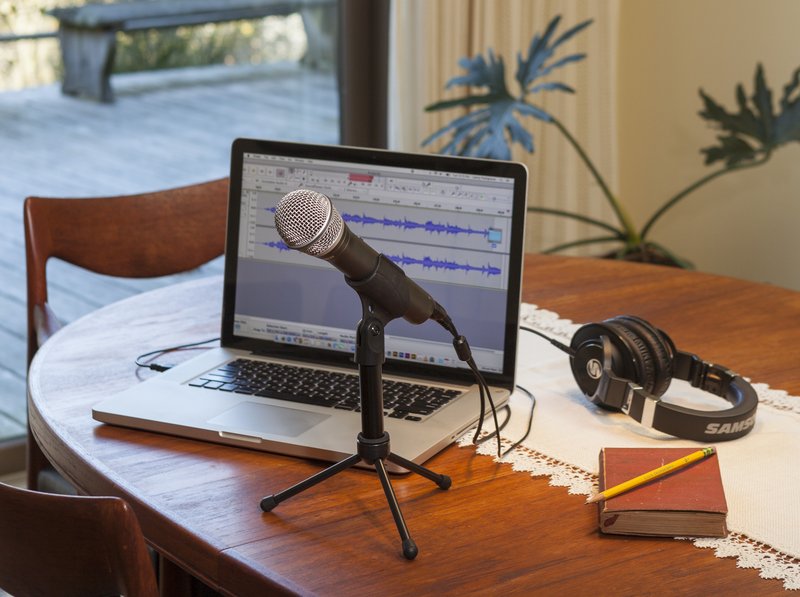How DC Thomson Media moved its podcast portfolio from studios to homes in lockdown – powered by Samson
Coronavirus struck about a year into DC Thomson Media’s podcasting adventure – just as we were accelerating some editorial and commercial projects.
We knew we didn’t want to interrupt our broadcasting. For our news brands, podcasts are an important way to tell richer stories, and for our lifestyle brands, they were and are a touchpoint of familiarity and friendliness when so much around us felt strange and hostile.
And so we switched, of course, to podcasting from home, standardising quickly on Zencastr since it recorded uncompressed, isolated sound for everyone through a simple browser interface. In the first couple of weeks, when none us of really knew how long this would last, we hobbled along with a motley assortment of in-line, laptop and external mics. We knew our audience would understand and forgive the drop in audio quality, but cleaning up and trying to balance such an eclectic mix of audio sources added an extra terror to editing, as well as being a bit rough, and so we quickly ordered more than two dozen Samson Q2U mics to send to our podcasters.

I knew exactly what I wanted. It had to be a dynamic mic because, although it doesn’t necessarily technically follow, that’s a good shorthand for a mic that rejects ambient noise and room tone, and there was no way I could ask our teams to be building pillow forts and locking children out of the house to create sound-treated rooms! With a dynamic mic like the Samson Q2U, differences in the audio signatures of the spaces my teams would record in – an echoey kitchen here, a muffled closet there, even outside – those differences would be dramatically reduced, and it would sound like they were all sitting round the same table.
It had to be simple, and be able to connect over USB, because I couldn’t expect my teams to be spending time on complicated set-up. The built-in 3.5mm jack meant I could just tell them to set the input and output to the same device, and they could hear themselves with zero delay – a useful virtual leash to keep them on-axis and close to the mic, as you hear yourself drop immediately if you move away.
But I didn’t just want the mics to be useful now. Even in early March when it was clear things were going to change dramatically, we trusted that some sort of normality would eventually reassert, so I didn’t want us to invest in kit that would only be relevant during lockdown and quarantine. And so after a lot of research – reading forums and Reddit threads, and watching reviews – we chose Samson Q2Us; their USB connection could be hooked up to smartphones as well as PCs and Macs so they could be redeployed for newsgathering and interviews in the field, and because they have an XLR jack too, we can integrate them into our podcasting and radio station mixing desks as circumstances change.

Plus, I have an idea – once we’re back into our offices and studios – to create mailable kits, based on the Samson Q2U, that we can roundtrip out to remote interview subjects so we can get beautiful audio from them too.
Because they really do sound wonderful. To be clear: we could have spent more, sure, on higher-end mics, but this was predominantly a temporary measure, and every dollar more we spent in these circumstances would have been subject to the law of diminishing returns; there was nothing I found that could catapult us to this level of quality for such a modest investment. Once the raw audio is in Audition, and I spend time – oh, so much time! – shuffling the conversations around to clean up crosstalk and delays from recording over the internet, I flatter myself that our podcasts sound better than many which are recorded round a table.

And having the mics, well, there’s just some indefinable magic there that makes our teams feel like the real broadcasters they are. It’s not like using your laptop mic on a Zoom call – though of course you can use them for that too. It’s a proper mic, on a stand; it gets them in the zone. You’re not writing copy now. You’re not having a meeting now. You’re not filling in an expenses claim now. Right now, you’re broadcasting.
It makes them feel like real podcasters. Because they are. It’s just that now, with them sitting at desks and on sofas all across the UK, they sound like it, too.
